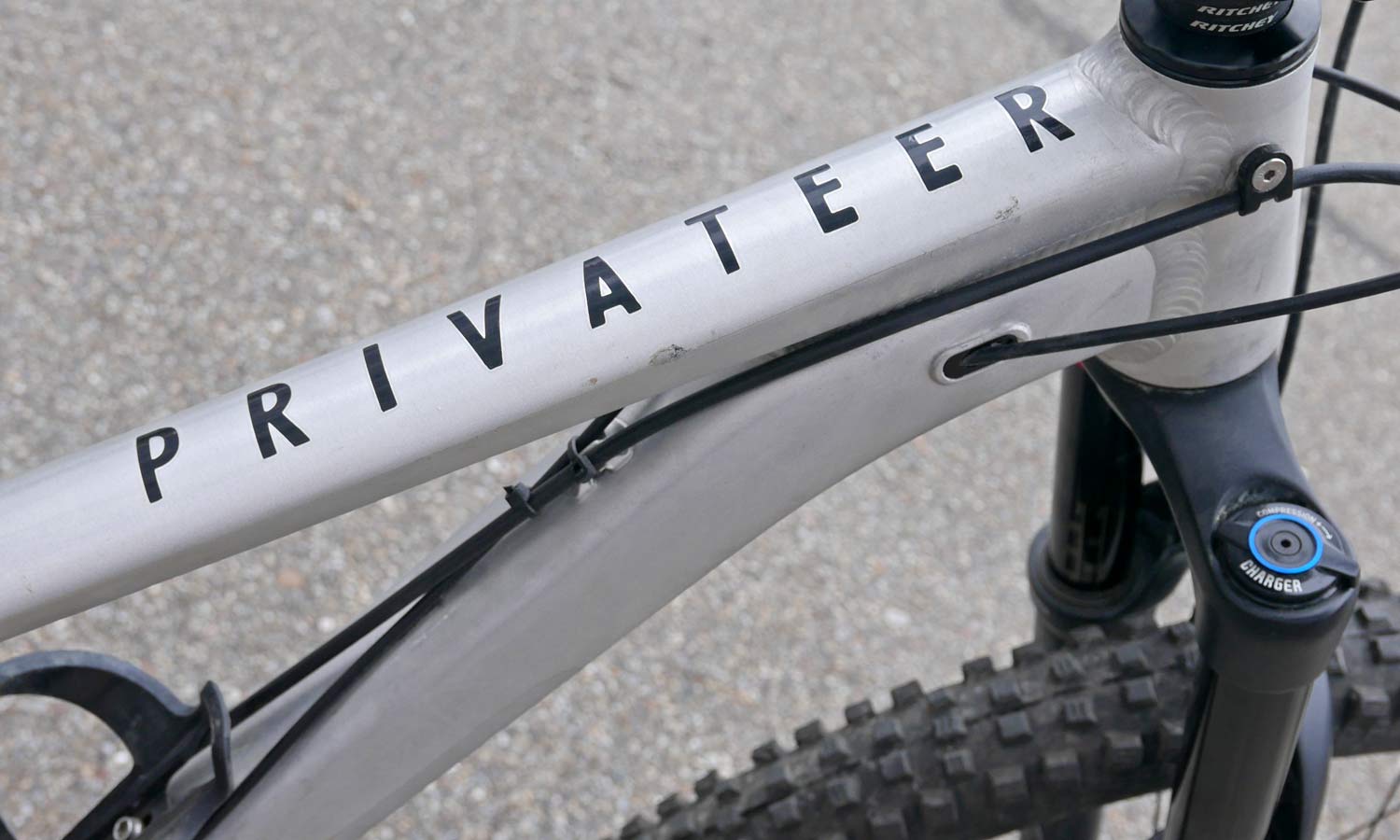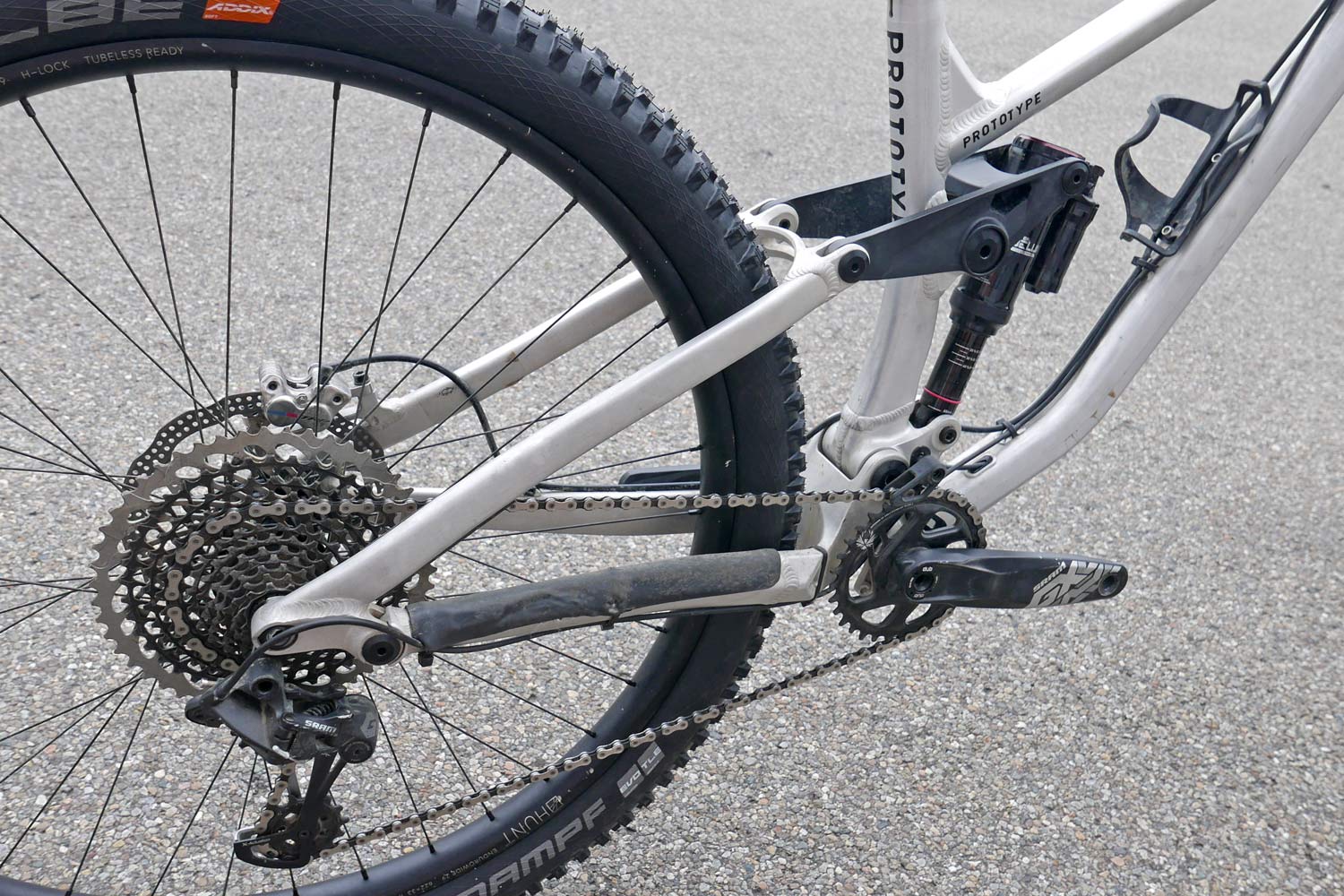Hunt wheels parent The Rider Firm teases the first of many mountain bikes to come under their new Privateer label in this new alloy enduro prototype. The all-new Privateer 161 delivers on an affordable performance ethos – a modern geometry mountain bike that can handle fast-paced enduro racing, but doesn’t require a pro bike sponsorship. The 161 has been in development for more than a year and a half, but this latest prototype has ironed out the details, and is set for a broad launch very soon…
2020 Privateer 161 affordable alloy enduro mountain bike
Privateer was established on the concept of developing modern progressive bikes for riders operating inside of a real-world budget. Unsurprisingly, it’s a similar idea to Hunt – the first company from The Rider Firm family – that create affordable performance wheels in carbon & alloy. The 161 then, was developed as a long-travel, progressive enduro bike that could be thrashed in the bike park or raced on the EWS-circuit, standing up to seasons of abuse.
The 161 itself was developed together with Privateer’s in-house team and Alistair Beckett of Redburn Design, who created the highly successful Nukeproof Mega and now freelances. Then the 161 prototypes have been shredded by top-20 EWS rider Matt Stuttard who already races EWS on Hunt wheels to make sure it’s up to snuff on the race course, and a number of Privateer’s own team to be sure it’s also suitable for the more average mountain biker.
The development has refined the 161mm rear travel Horst-link, four-bar suspension design, as well as its race-ready progressive geometry. But it also tuned up small changes like the headtube side cable guides which will be moved to not interfere with race number plates. The bike is designed to run with a 170mm travel fork, but can also work with a 160mm for less technical riding.
EWS enduro race ready geometry
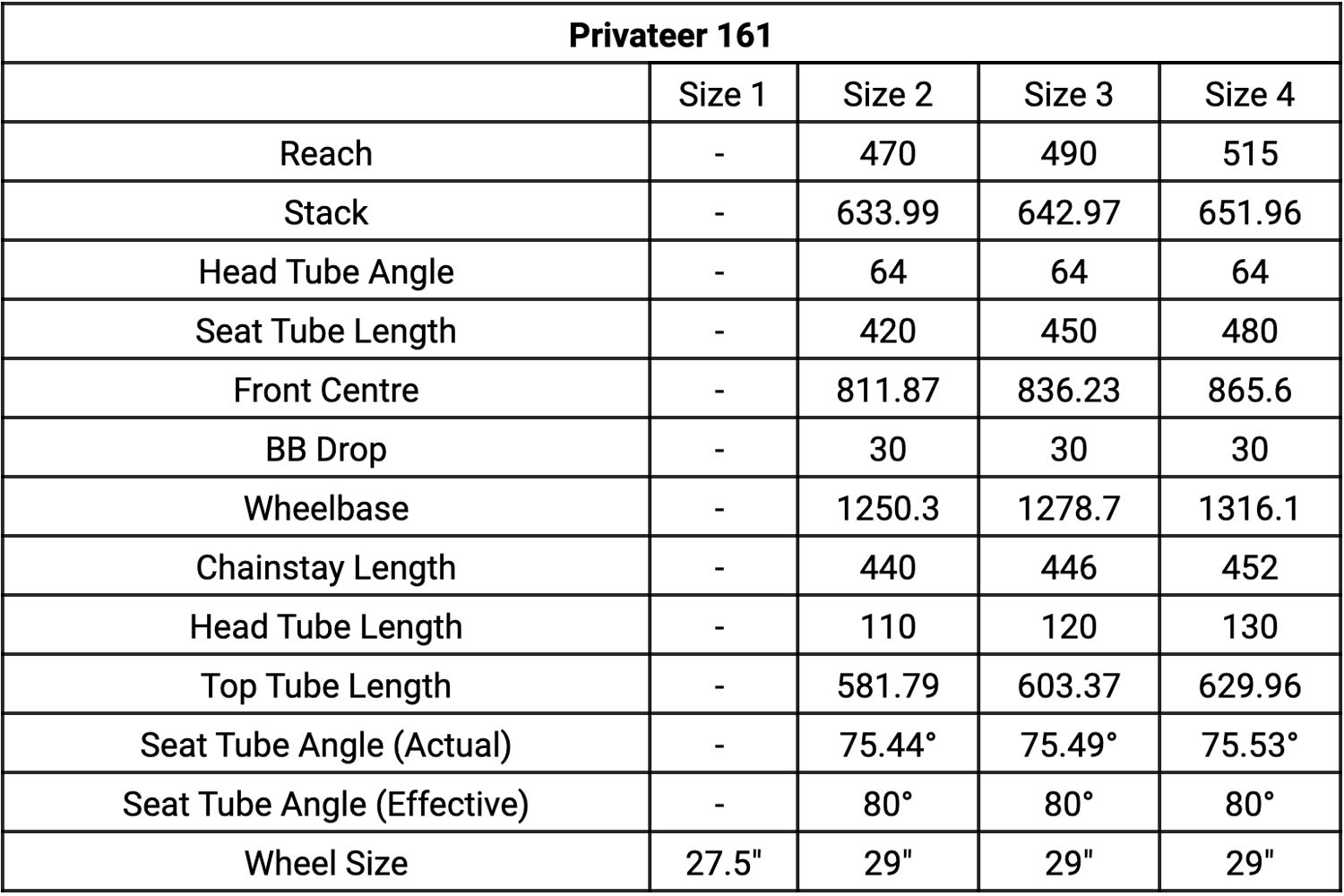 The geometry of the 161 was developed for confidence descending steep enduro tracks, but also the ability to climb back up without getting tired pulling on the bar. A 64° head angle for the 29er isn’t out of the ordinary, but the effective 80° seat angle is. But once you drop the seat and point the bike down, it slides back to a familiar position out of the way.
The geometry of the 161 was developed for confidence descending steep enduro tracks, but also the ability to climb back up without getting tired pulling on the bar. A 64° head angle for the 29er isn’t out of the ordinary, but the effective 80° seat angle is. But once you drop the seat and point the bike down, it slides back to a familiar position out of the way.
Another interesting note out of the geometry chart are the proportional chainstay lengths, designed to keep all sizes of riders balanced in the middle of the bike for optimized control. Privateer hasn’t settled yet on their sizing names (hence the 1-4 above), but it’s probably safe to call it a four size S-XL range.
The one size missing from this chart is the Size1 (small) which will use 27.5″ wheels. Privateer is still in the process of finalizing geometry as they aim to recreate the same ride & performance, prioritizing standover clearance and dropper post insertion.
Privateer tech details
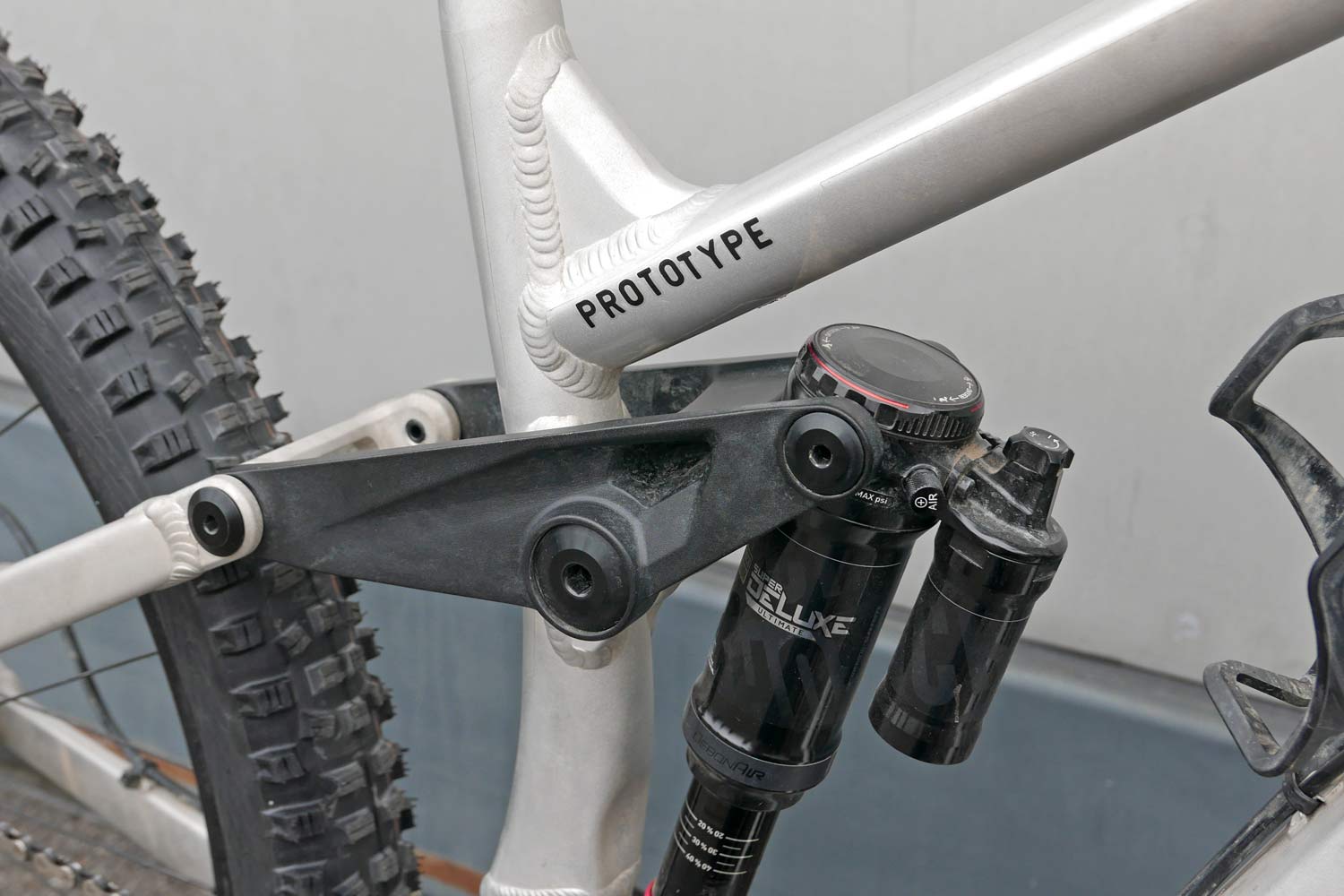 The 161 frame is built from a number of shaped alloy tubes. Privateer says they were able to keep production costs down by carefully selecting the tubeset from catalogs of shaped alloy tubing, then they were able to focus on developing all the suspension pivots, linkages & reinforcements to get the design they were after.
The 161 frame is built from a number of shaped alloy tubes. Privateer says they were able to keep production costs down by carefully selecting the tubeset from catalogs of shaped alloy tubing, then they were able to focus on developing all the suspension pivots, linkages & reinforcements to get the design they were after.
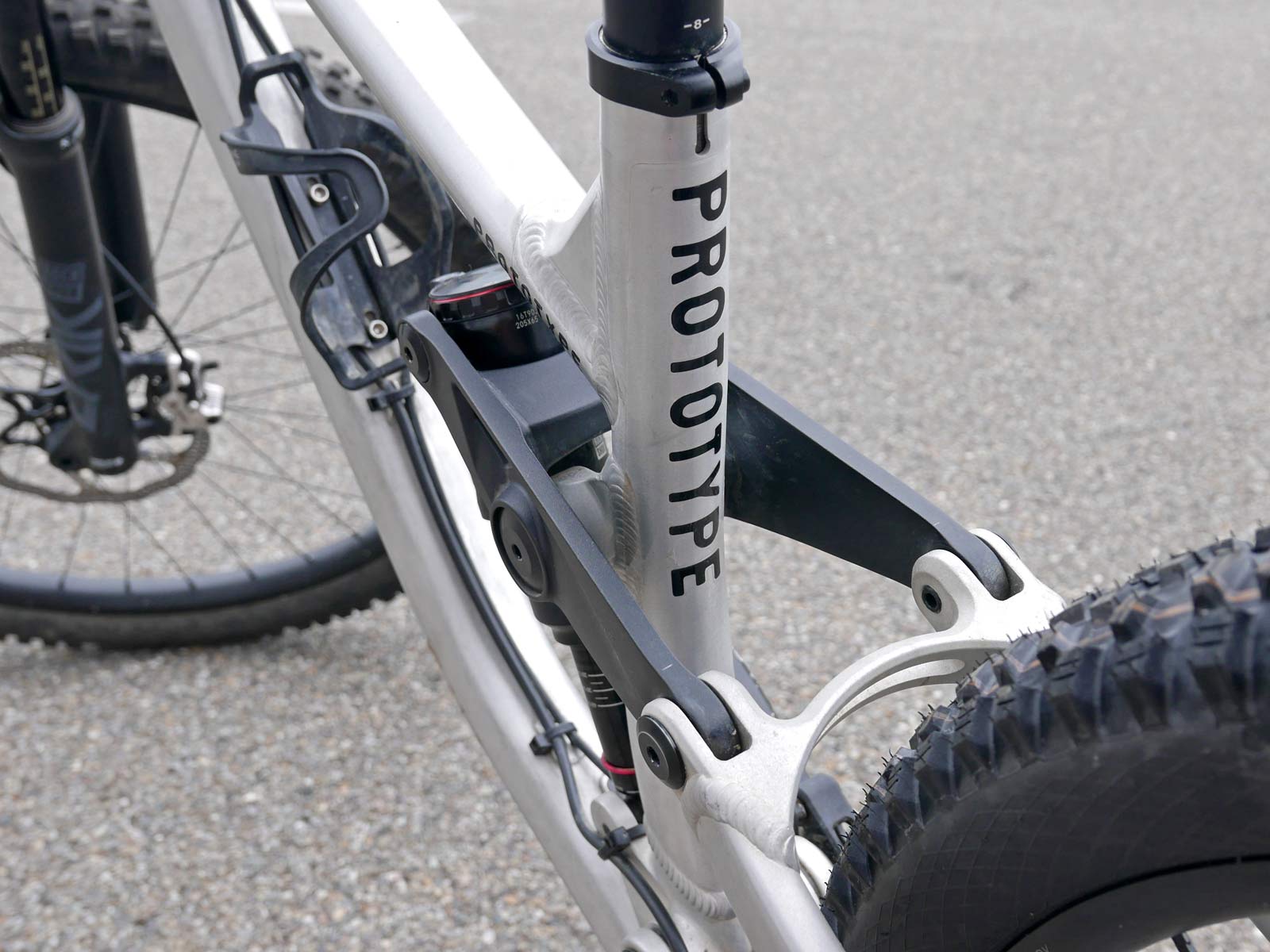 This prototype was built up with a welded rocker, but now that its geometry is totally settled, production Privateer 161s will feature a one-piece forged, then CNC-machined rocker link. The idea was to refine the design, then produce in a single piece to keep alignment accurate, extending bearing life & improving strength.
This prototype was built up with a welded rocker, but now that its geometry is totally settled, production Privateer 161s will feature a one-piece forged, then CNC-machined rocker link. The idea was to refine the design, then produce in a single piece to keep alignment accurate, extending bearing life & improving strength.
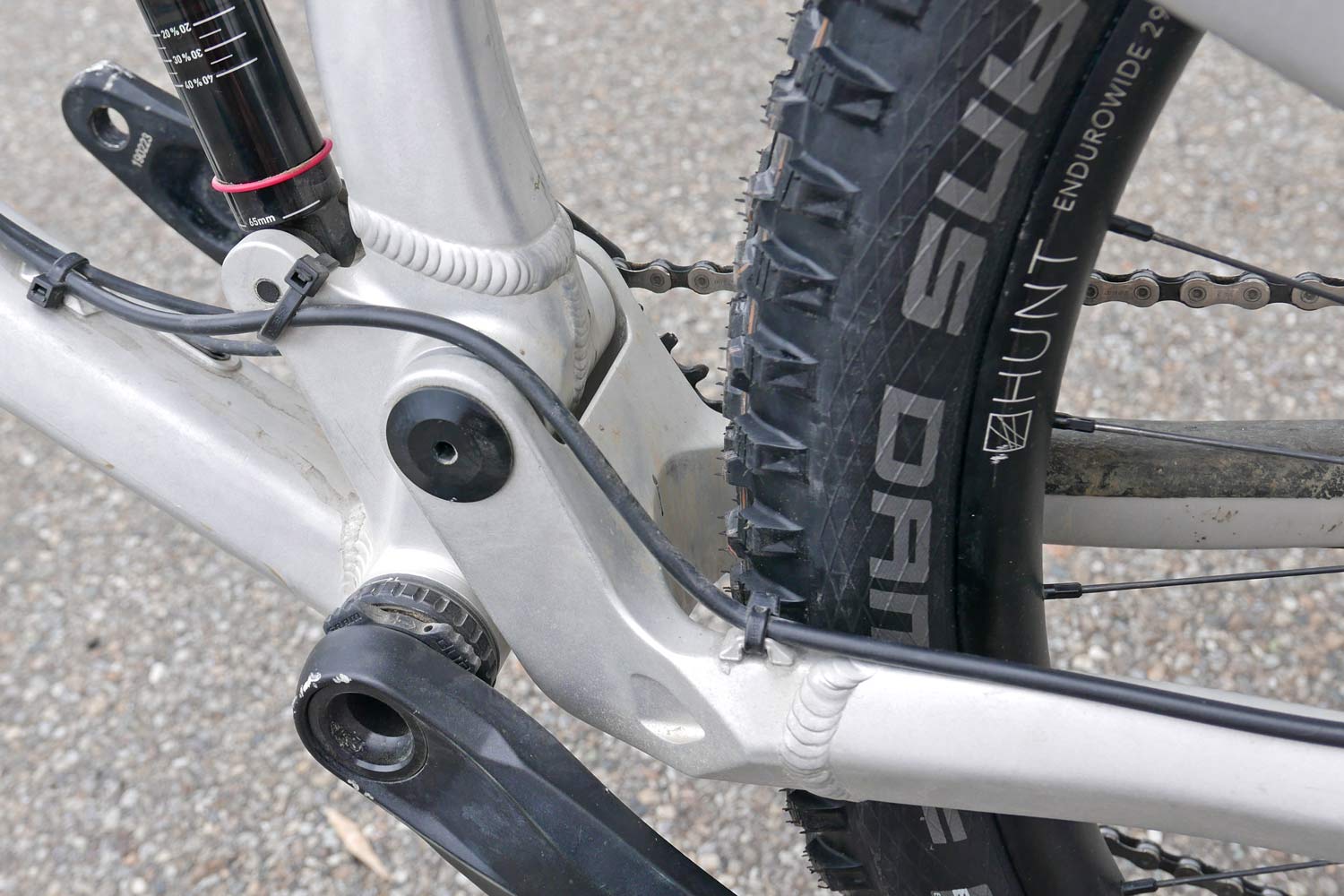 All of the yokes & joints were then developed in house, unique to the 161. That gave Privateer all the design flexibility that they needed to create the geometry, suspension design, and kinematics they were after, while keeping the final retail cost in check. It also gave big mud clearance, a major concern for UK riders, with room for up to 29 x 2.6″ tires (ahem… tyres.)
All of the yokes & joints were then developed in house, unique to the 161. That gave Privateer all the design flexibility that they needed to create the geometry, suspension design, and kinematics they were after, while keeping the final retail cost in check. It also gave big mud clearance, a major concern for UK riders, with room for up to 29 x 2.6″ tires (ahem… tyres.)
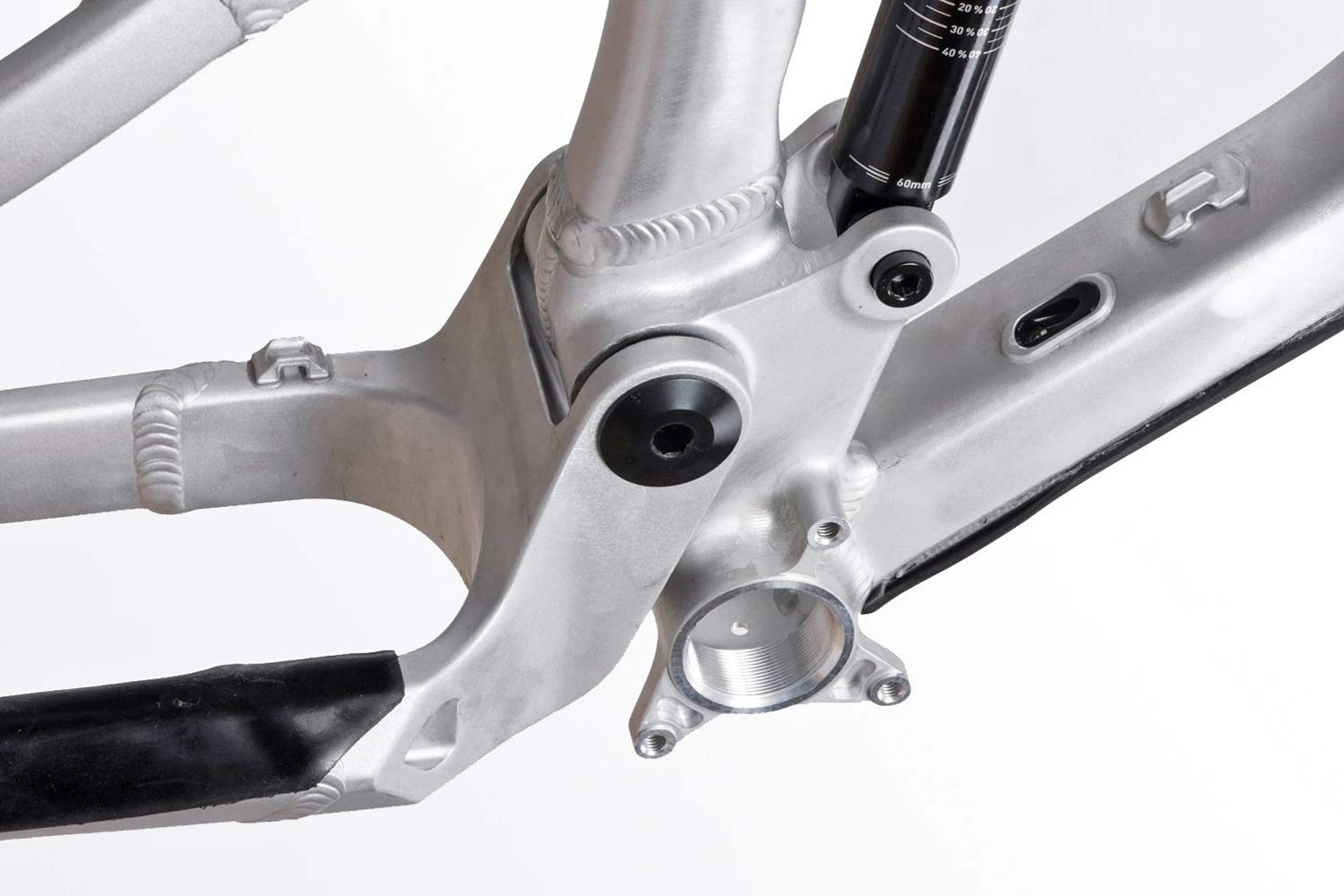
The bottom bracket of the 161 is a good example, with the final production bikes using a complex shaped construction that puts the main pivot, lower shock mount, threaded BB, and ISCG chain guide tabs into a single precision machined element.
That main pivot rotates on an oversized 15mm axle with wide bearing spacing and large balls for long bearing life. There are 3 bearings on the main pivot – two on the driveside since they have to set in to clear the chainring & one set wide on the non-driveside. All bearings across the bike are fully-enclosed, dual-contact sealed bearings, developed to survive in wet UK weather. And all also get integral notches to make bearing replacement pain-free when the time comes.
Finishing out the rear end of the 161, there are more sealed bearing at the chainstay pivot (for a total of just three different bearing size on the bike), a Boost space 12mm bolt-on thru-axle, and post mount brakes for a 180mm rotor.
The 161 is being sold only as a frameset, with the intention of making it affordable to build up an EWS-ready alloy enduro bike on a privateer’s budget. The final build will be up to each buyer, but just for comparison this affordable spec without any overly expensive components weighed in at 15.8kg (just under 35lb).
Pricing & availability (and next steps for Privateer)
The new Privateer 161 is set to open up for pre-order later this autumn, around the end of October into November 2019. The new alloy enduro bike will first be available only as a frameset including a RockShox Super Deluxe Ultimate rear shock for up to £1300 (~1450€ currently). Deliveries of those first bikes is targeted for the start of 2020, with the intention of building it up to ride once the trails dry out after the winter.
Complete bike builds are expected down the line, most likely in late 2020.

As for other Privateer bikes in the pipeline, it seems a 141mm trail bike with similarly progressive geometry is currently in development. And it is only maybe four months behind the 161. Using our crystal ball (and a calendar) suggests that should be rideable in consumer hands by next summer, at a similarly affordable price.
